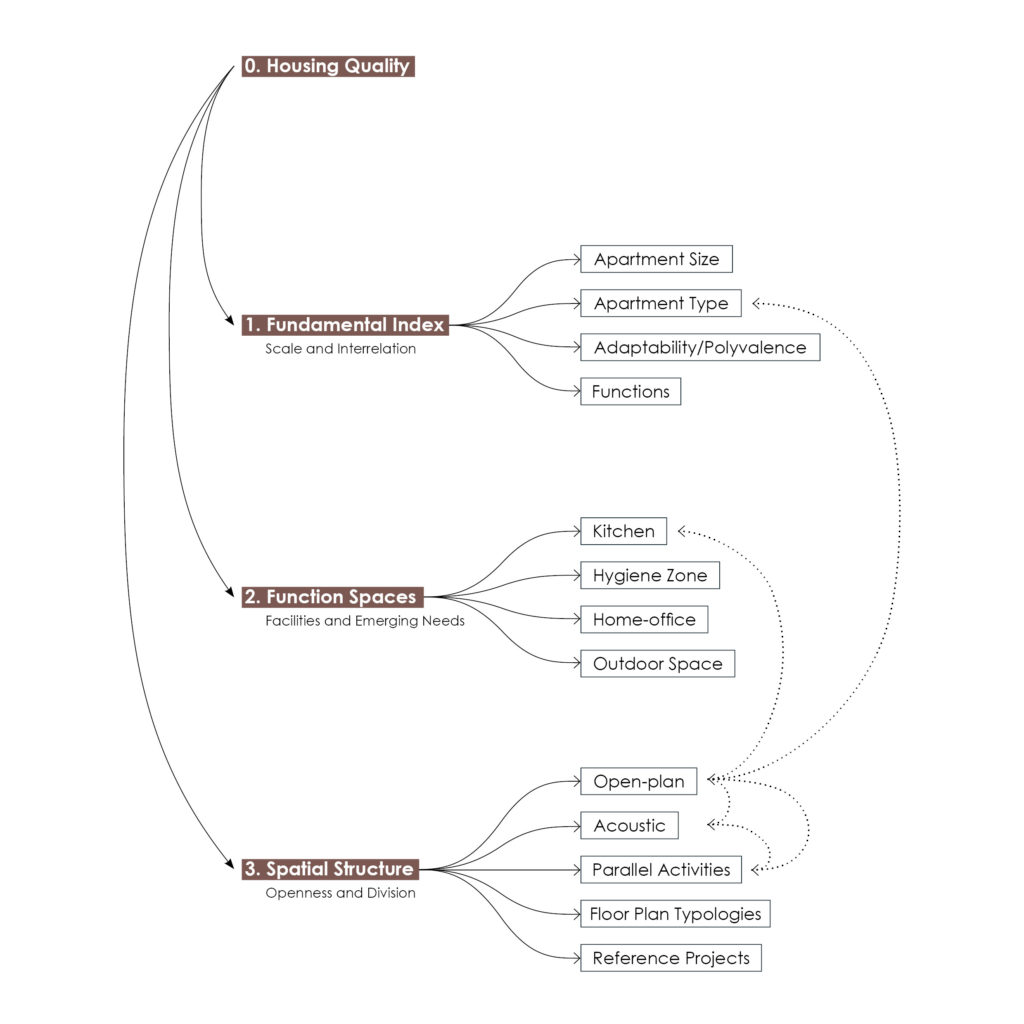Housing Quality
Poor housing is correlated with increased risk of depressive symptoms during the COVID-19 lockdown. (Amerio et al., 2020) So far, there has been limited amount of studies focusing on the design of real estate under the background of corona virus.
An online survey based in Italy and carried out during the pandemic revealed the parameters that cause moderate-severe and severe depressive symptoms. (Amerio et al., 2020) They are small living area, poor views, unusable balcony, and a scarce indoor quality. Poor indoor quality includes little natural lightning and acoustic comfort. Inadequate privacy during phone calls is reflected frequently from individuals who bear depressive symptoms. Earlier study also found that inadequate daylighting and poor window views can increase the possibility of getting depressed by 60% and 40% respectively. (Hoisington et al., 2019) It was concluded that housing design strategies should focus on larger and more livable living spaces facing green areas. (Amerio et al., 2020) Furthermore, poor housing condition and depressive mood will lead to bad working performance, which even worsen the psychological health and they end up in a vicious circle.
Besides the subjective measurements and facts, objective attitudes towards housing choice along with the development of disease are worth considered. Attention to healthy home is once again being paid among people. In the end users’ point of view, what they value the most also reflects the potential change or guideline for future healthy homes. Zarrabi, Yazdanfar, and Hosseini (2021) investigated the residential preferences and priorities of choosing a housing unit in Tehran after the release of COVID-19. 25 indicators were listed under three main dimensions: mental health, physical health and socio-economic lifestyle. The three dimensions were first categorized into five indexes. The result showed that the top-ranked indicators are natural light, view, interior acoustic and (semi-)open space (terrace). Mental health parameter is the most concerned by the residents in all income groups.
In fact, there has been numerous studies on how different aspects affect the health of residents before COVID-19. Many elements are associated with housing quality, from neighborhood environment to material usage for single room. To be more specific and structured, three dimensions are considered and discussed in this thesis as the relevant elements that determine the housing quality. The sub-factors are also selected because of relevance based on researches.
The three dimensions are:
a. Fundamental Index – Scale and Interrelation
b. Function Spaces – Facilities and Emerging Needs
c. Spatial Structure – Openness and Division

Conclusions
With these elements discussed, they can be guidelines or check list for future housing design to help evaluate the living environment in different aspects. Following is an overall conclusion for the research.
a. An apartment should be at least 50㎡ and better larger than 60㎡ as a minimum area even for the smallest household. It should include at least two and better three or more rooms.
b. A separable open kitchen with sufficient space is an ideal plan to meet different needs. It’s good to have a dirt zone with cleaning facility at the entrance. Having an independent working space will be a growing need. Having private outdoor space is crucial. Loggia and mix type will offer the better integration compared to projecting balcony.
c. Open-plan offers many good qualities while causing problems. Appropriate division method can prevent acoustic interference and enable parallel activities. Zoning and circular movements are ways to keep a balance between openness and division.